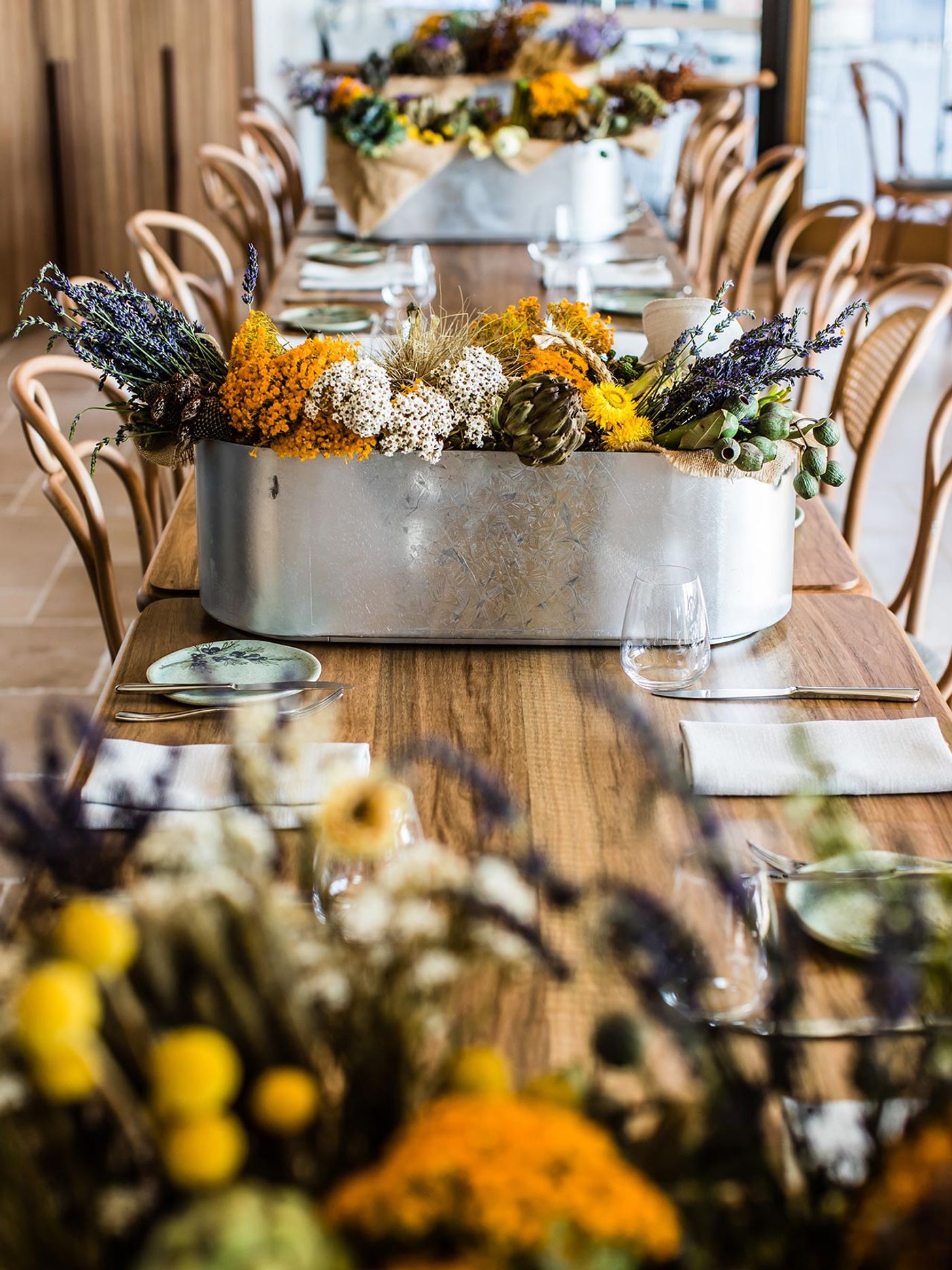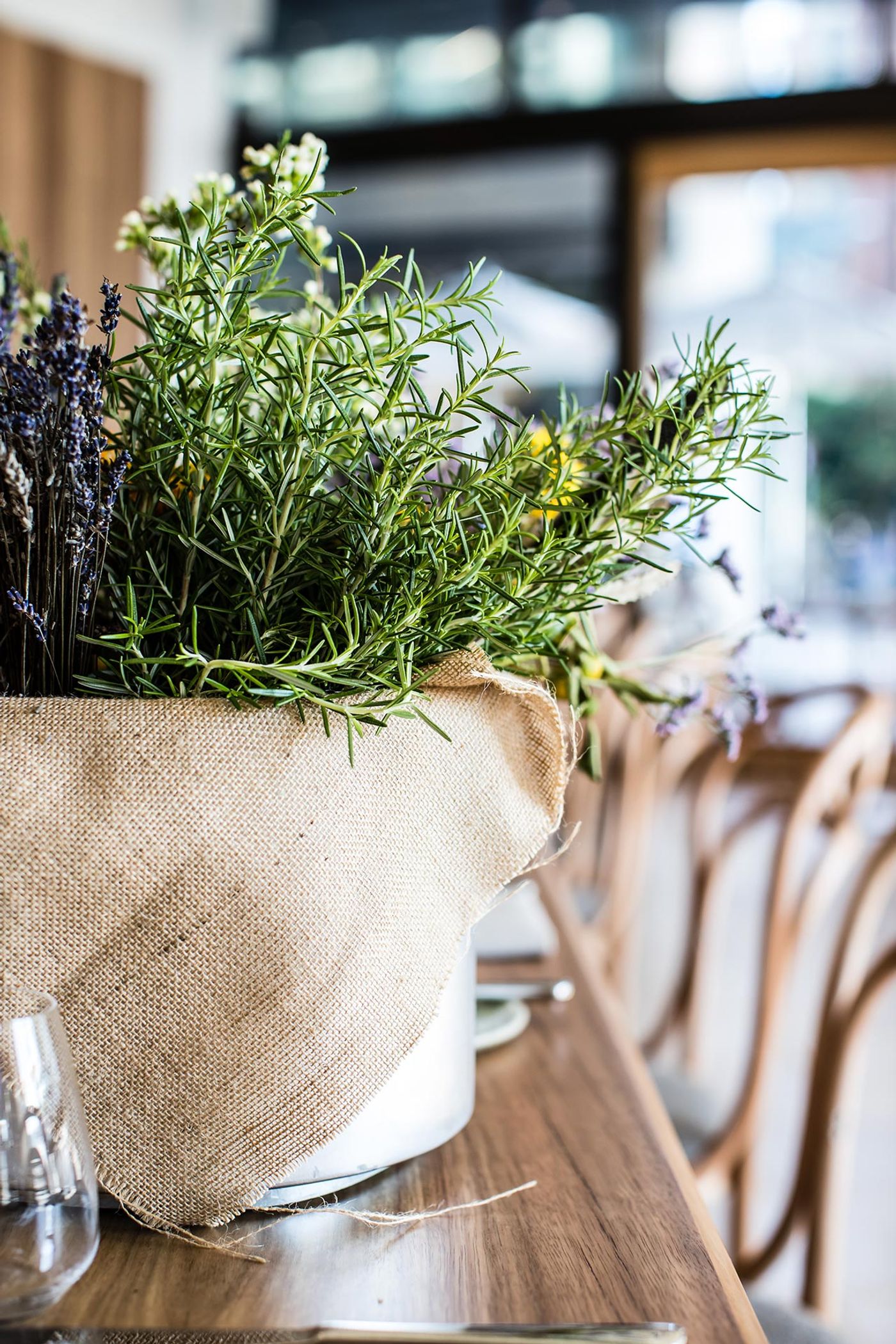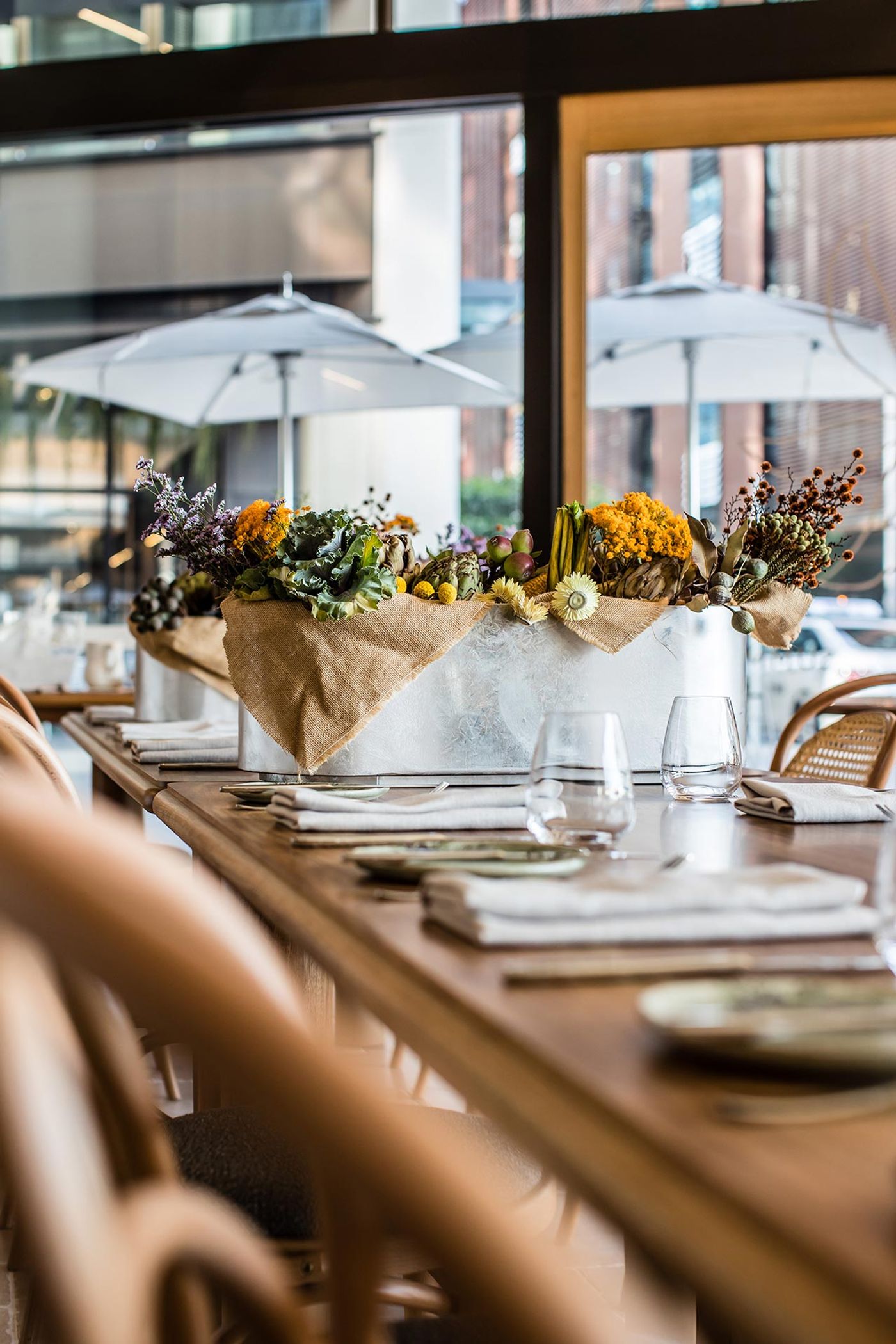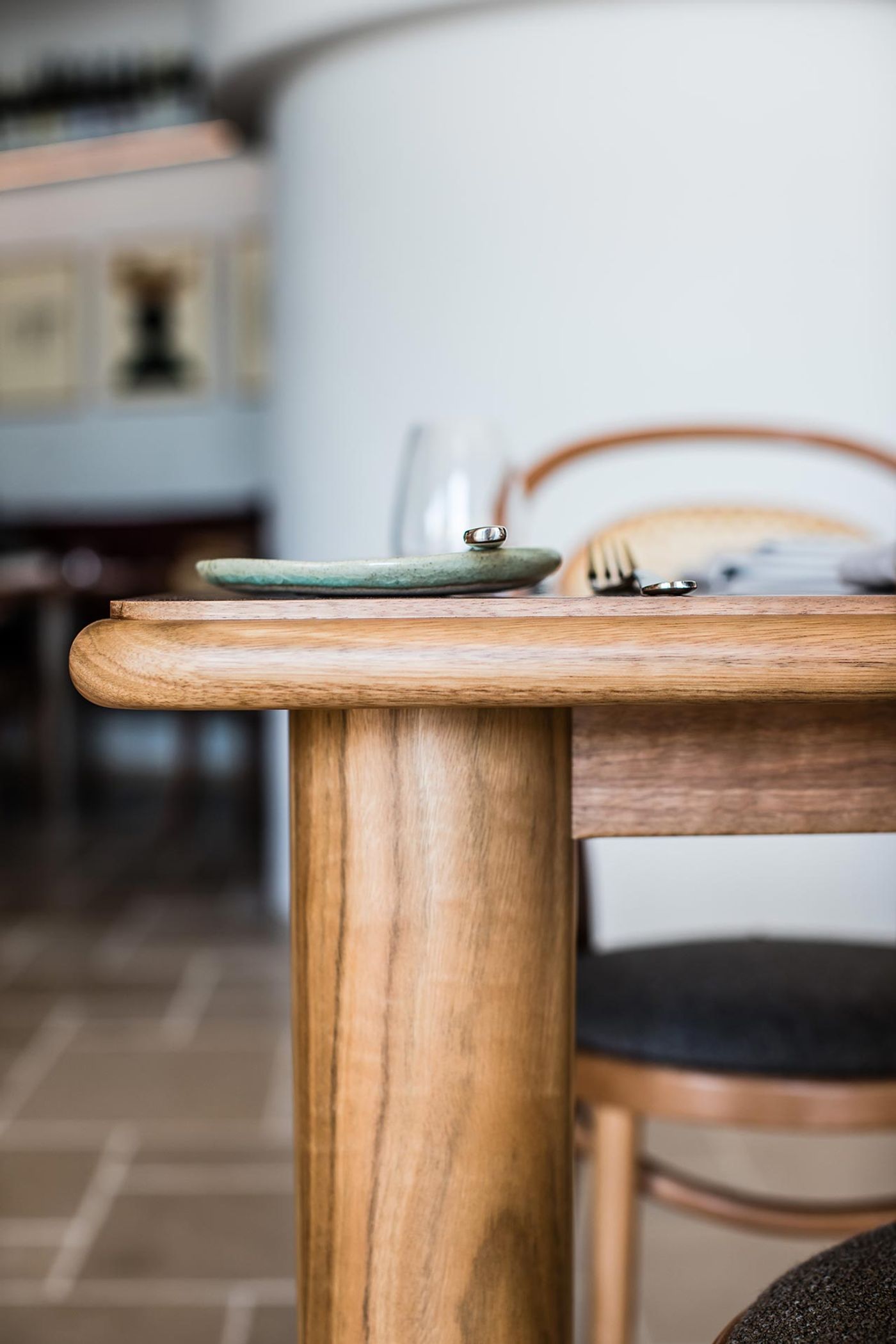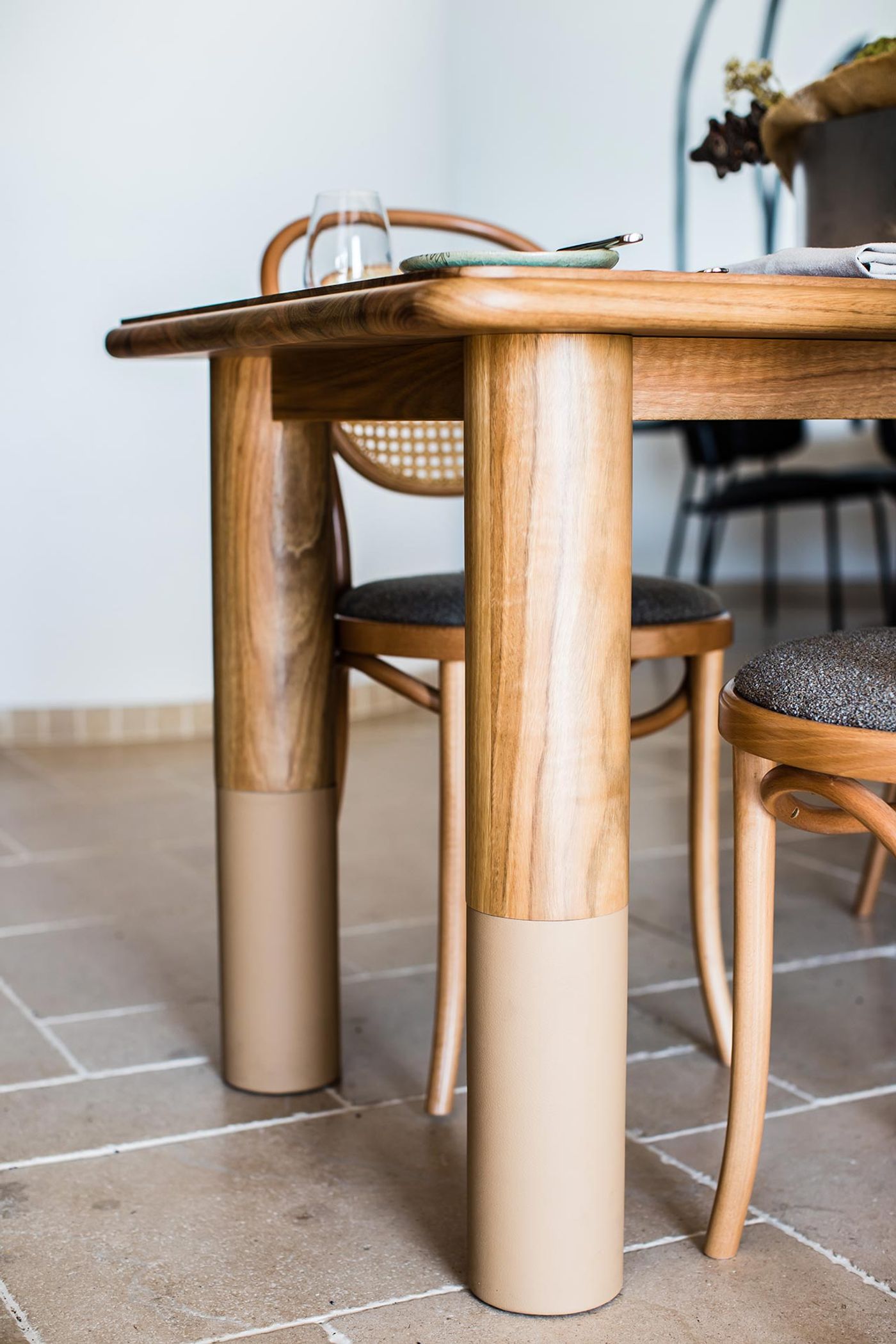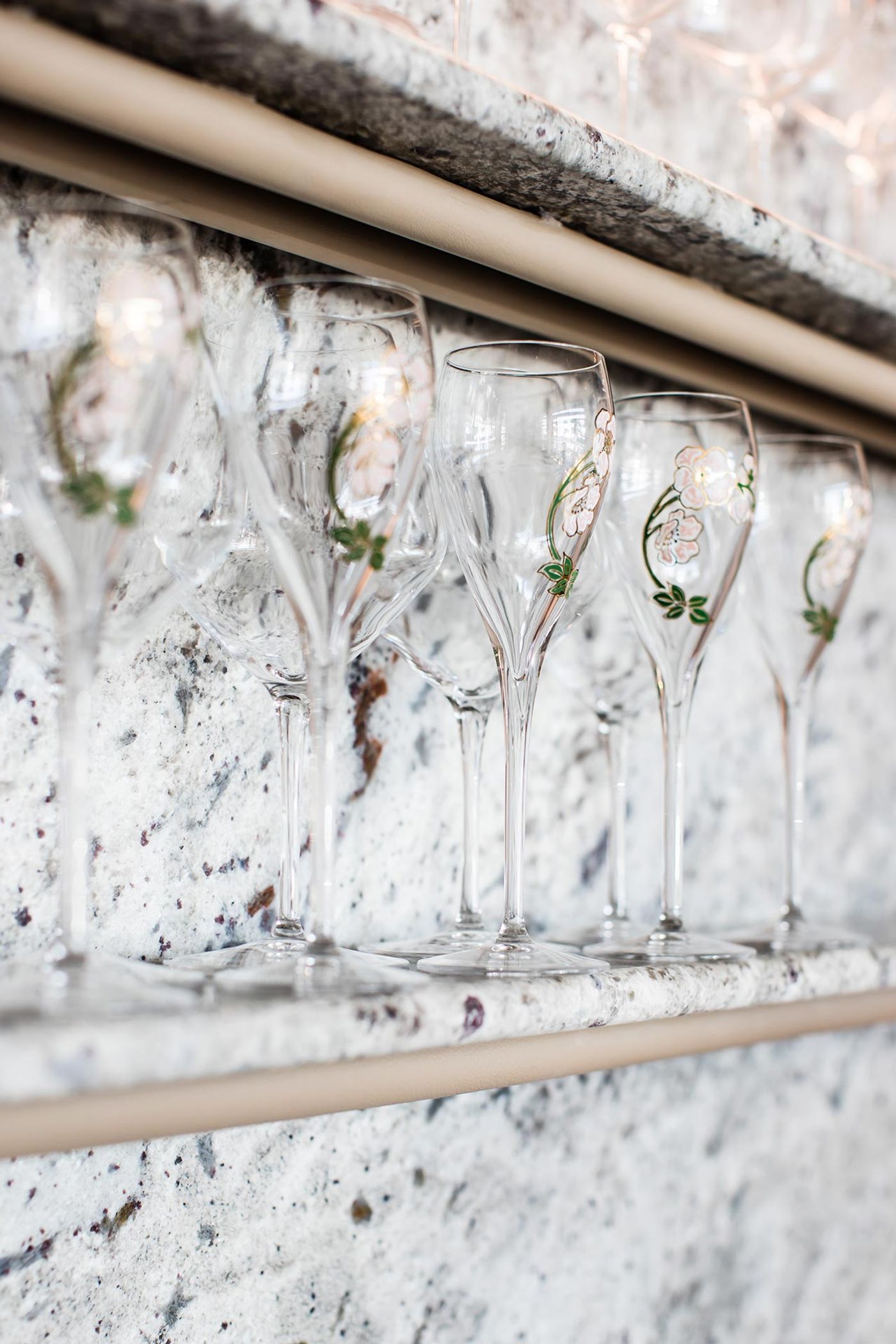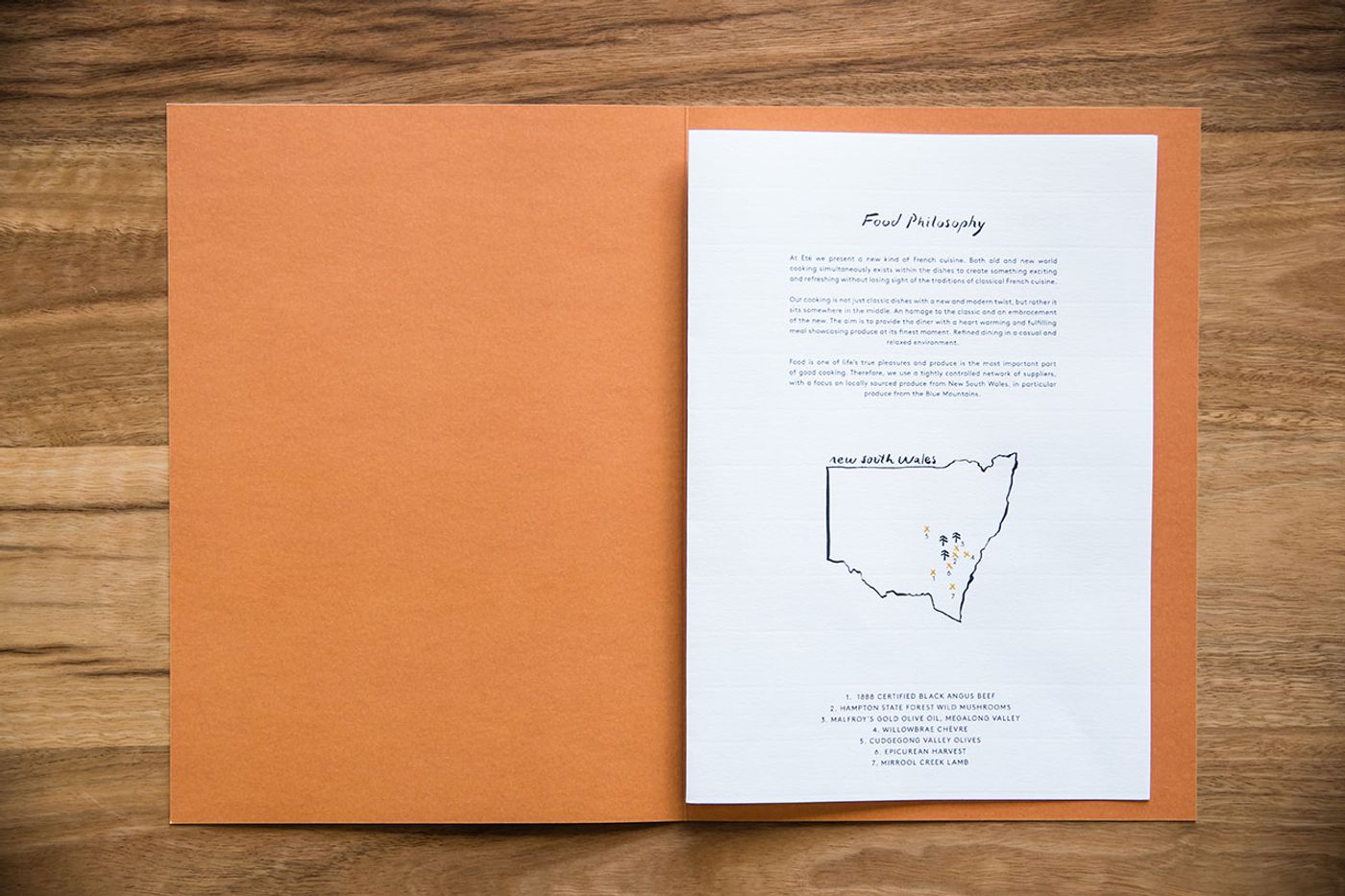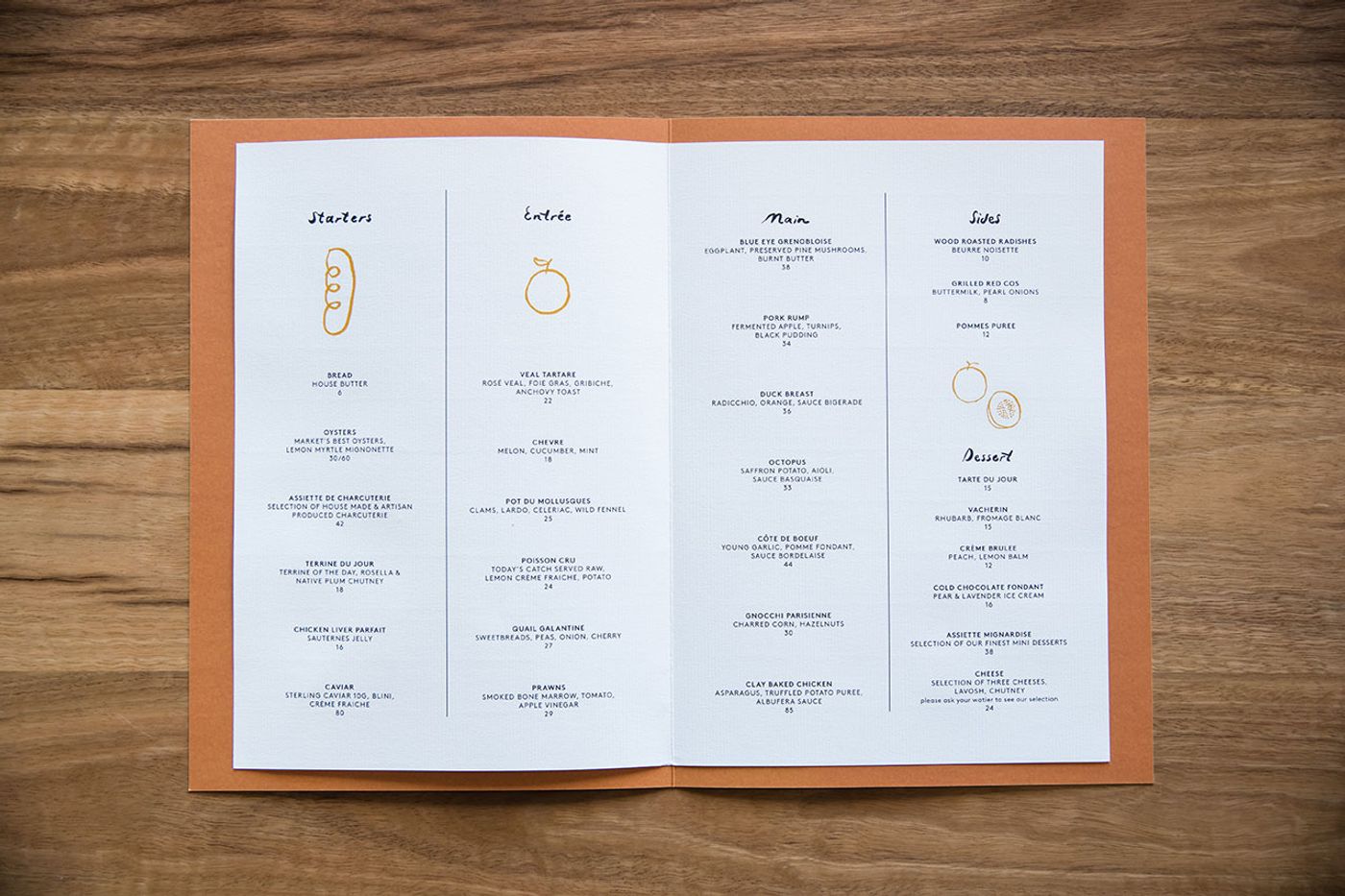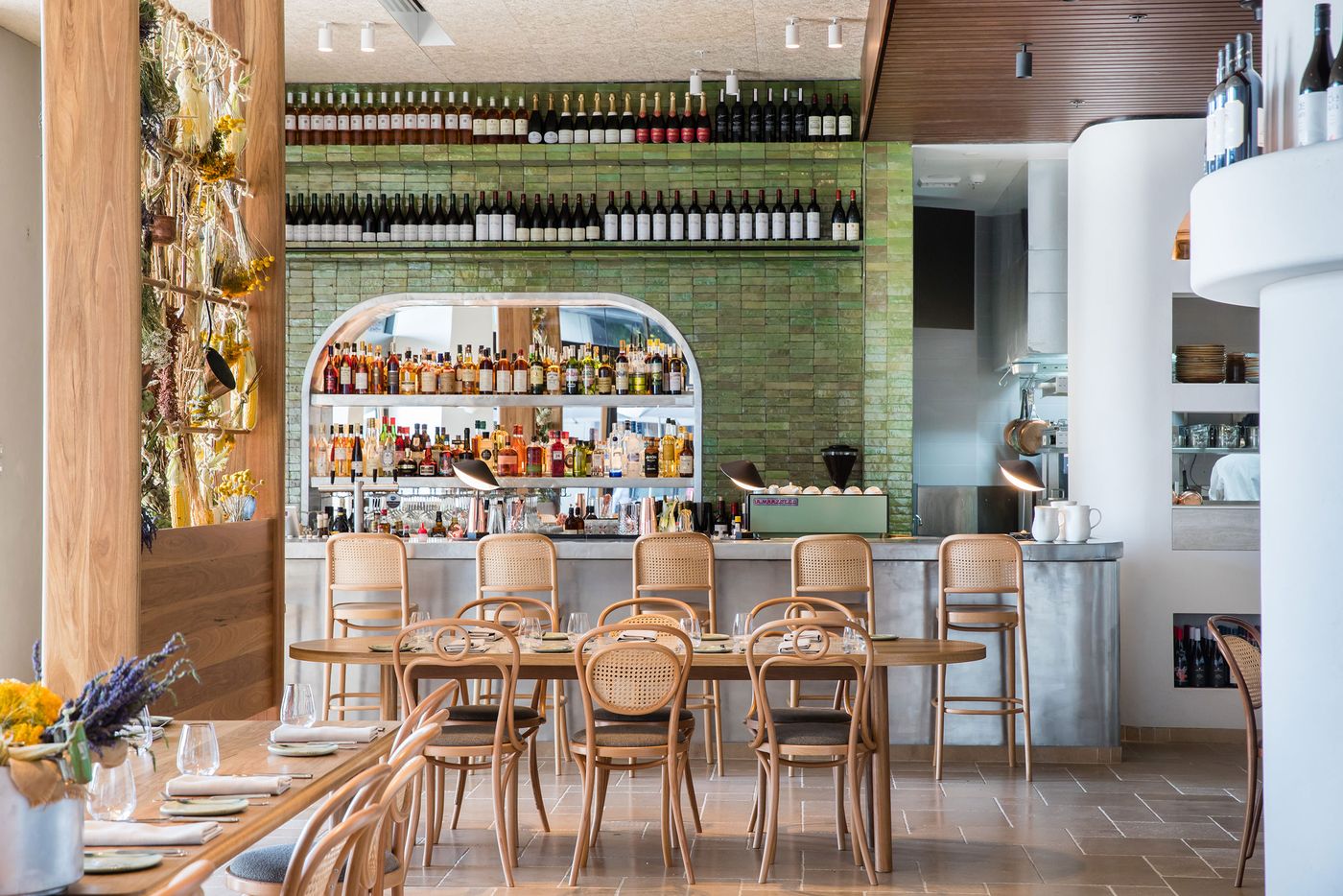
Traditional Provence Meets Contemporary Australia in Sydney’s Été Restaurant
Words by Yatzer
Location
Sydney, Australia
Traditional Provence Meets Contemporary Australia in Sydney’s Été Restaurant
Words by Yatzer
Sydney, Australia
Sydney, Australia
Location
Located on the waterfront at Barangaroo, an up-and-coming, inner-city suburb of Sydney, Australia, presently in the midst of a major urban renewal project, Été, which is French for “summer”, is a restaurant that as its name suggests offers a taste of French cooking tied to seasonality. The menu’s Francophile sumptuousness is manifested in the restaurant's décor that has been designed by Australian interior designers Foolscap Studio as a tribute to the effortless elegance of classic Provençal style, albeit filtered through an Australian sensibility of contemporary refinement.
Foolscap Studio’s interior design reinterprets the rustic aesthetic of the French Provençal style through a contemporary language of subtlety and polish, transforming, for example, the typical rustic timber beams into smooth, blonde bentwood, turning the galvanized metal wash buckets into hand-beaten zinc cladding for the bar counter, and channelling the coiled wrought iron ornamentation through the hand-painted wall mural by Chicago-based graphic designer John Zabawa.
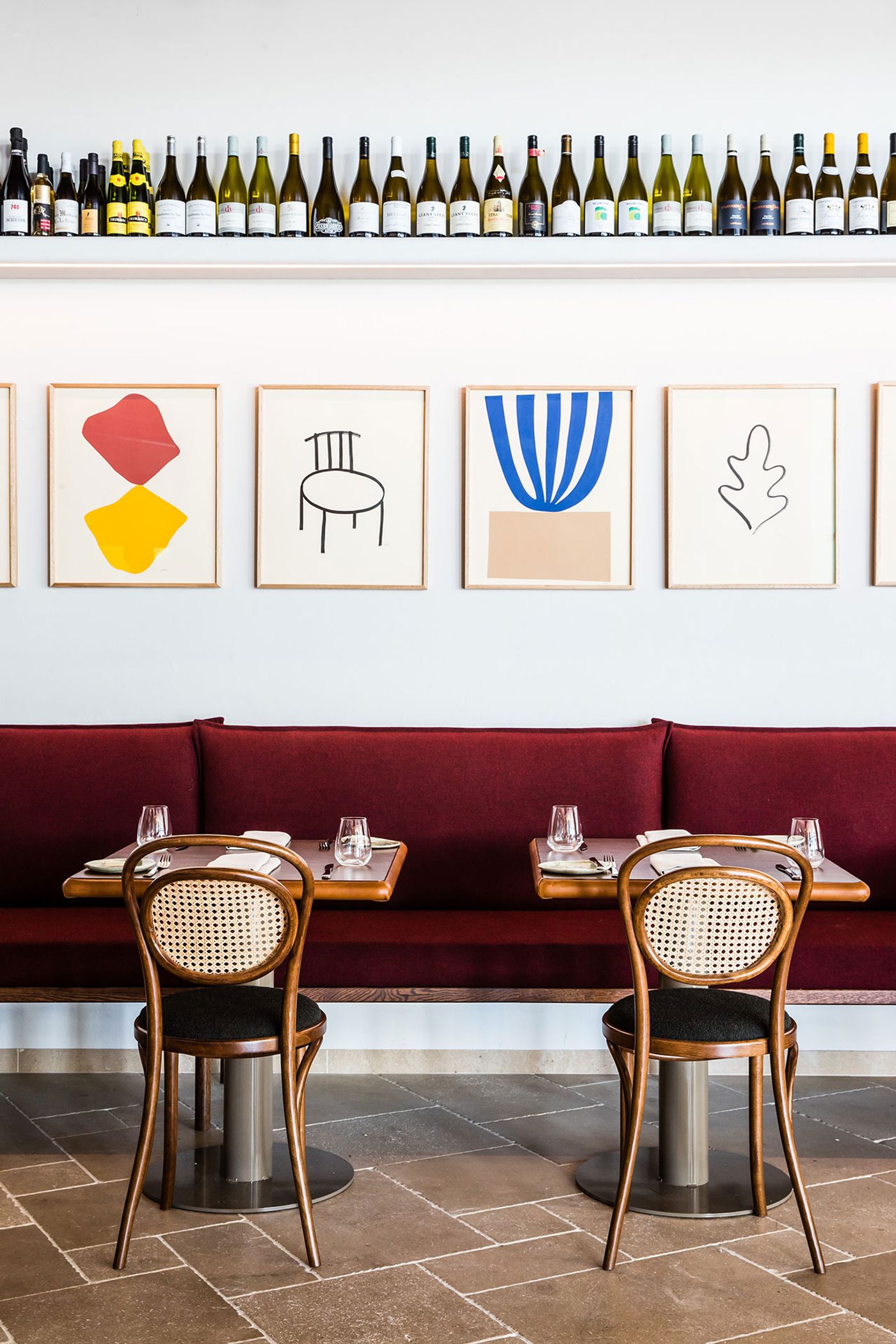
Photo by Nikki To.
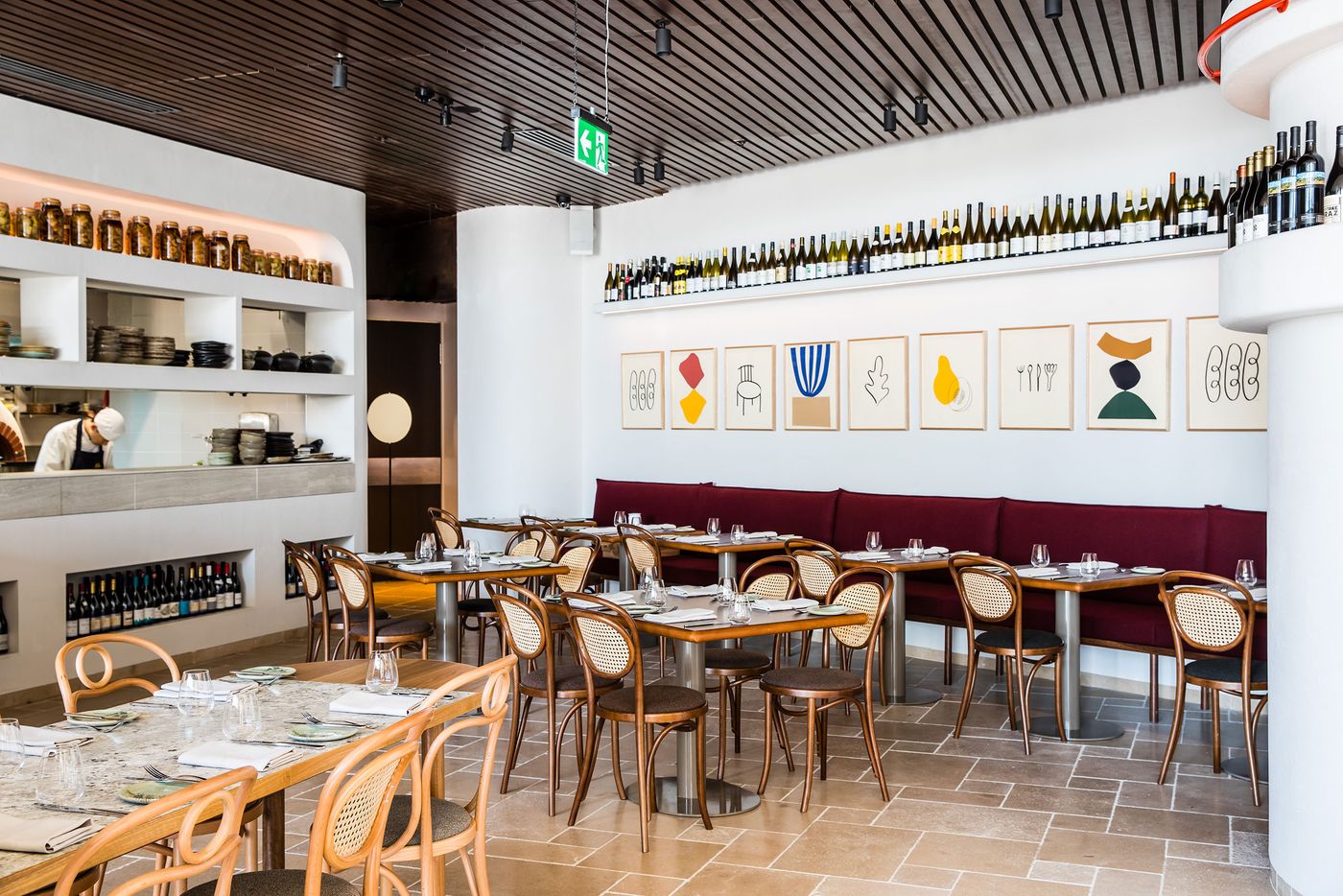
Photo by Nikki To.
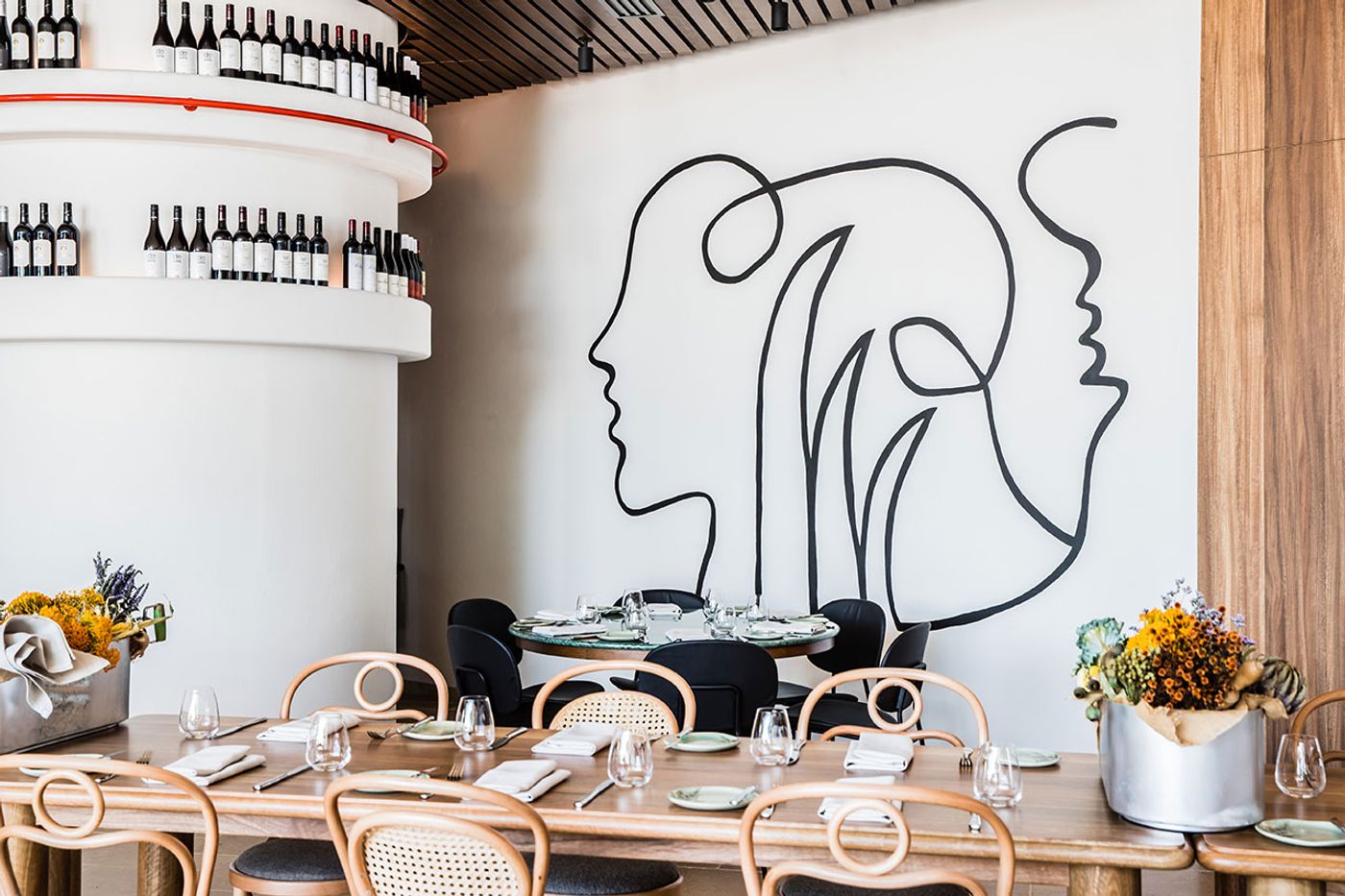
Photo by Nikki To.
The mural’s single-line drawing style, which brings to mind Picasso’s freehand drawings, an artist who spent many decades in the South of France, is complemented by the rough hand-drawn typeface and naive brush-style illustrations that Zabawa developed for the restaurant’s menu and visual identity, as well as by a series of ten artworks that are displayed on the walls.
From the traditional bentwood and cane Thonet chairs to the hand-made, green ceramic tiles that adorn the bar’s backdrop, the décor is peppered with subtle nods to French elegance, while the rough limestone floor tiling and the long communal table, cleverly demarcated by aluminium vessels, allude to the French vernacular. The combination of old and new world elements is more than an aesthetic mélange though. It is also an evocative reflection of Été’s cuisine, which combines old-world traditions of classical French cuisine with new world cooking techniques, as well as a recognition of the importance of seasonality and landscape to the cultural identity of both regions.
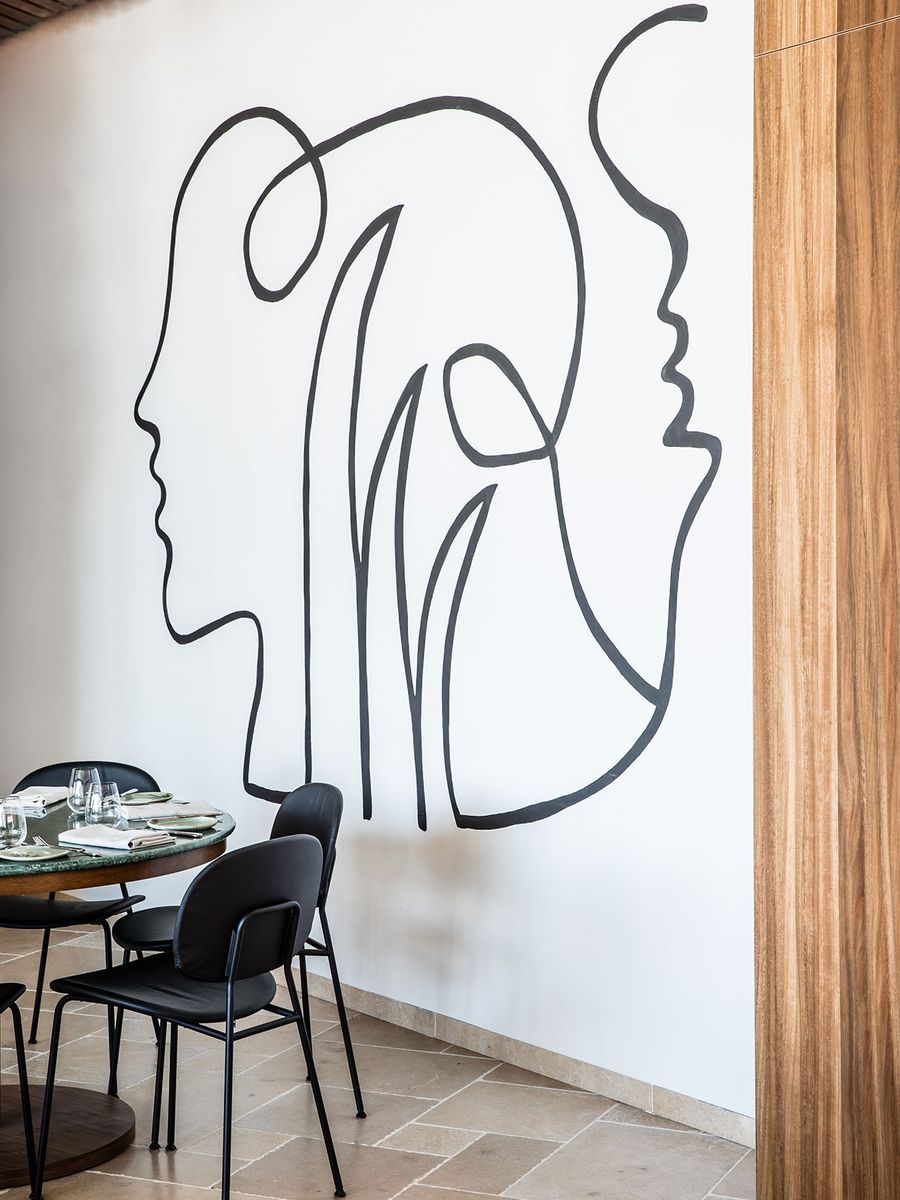
Photo by Nikki To.

Photo by Nikki To.
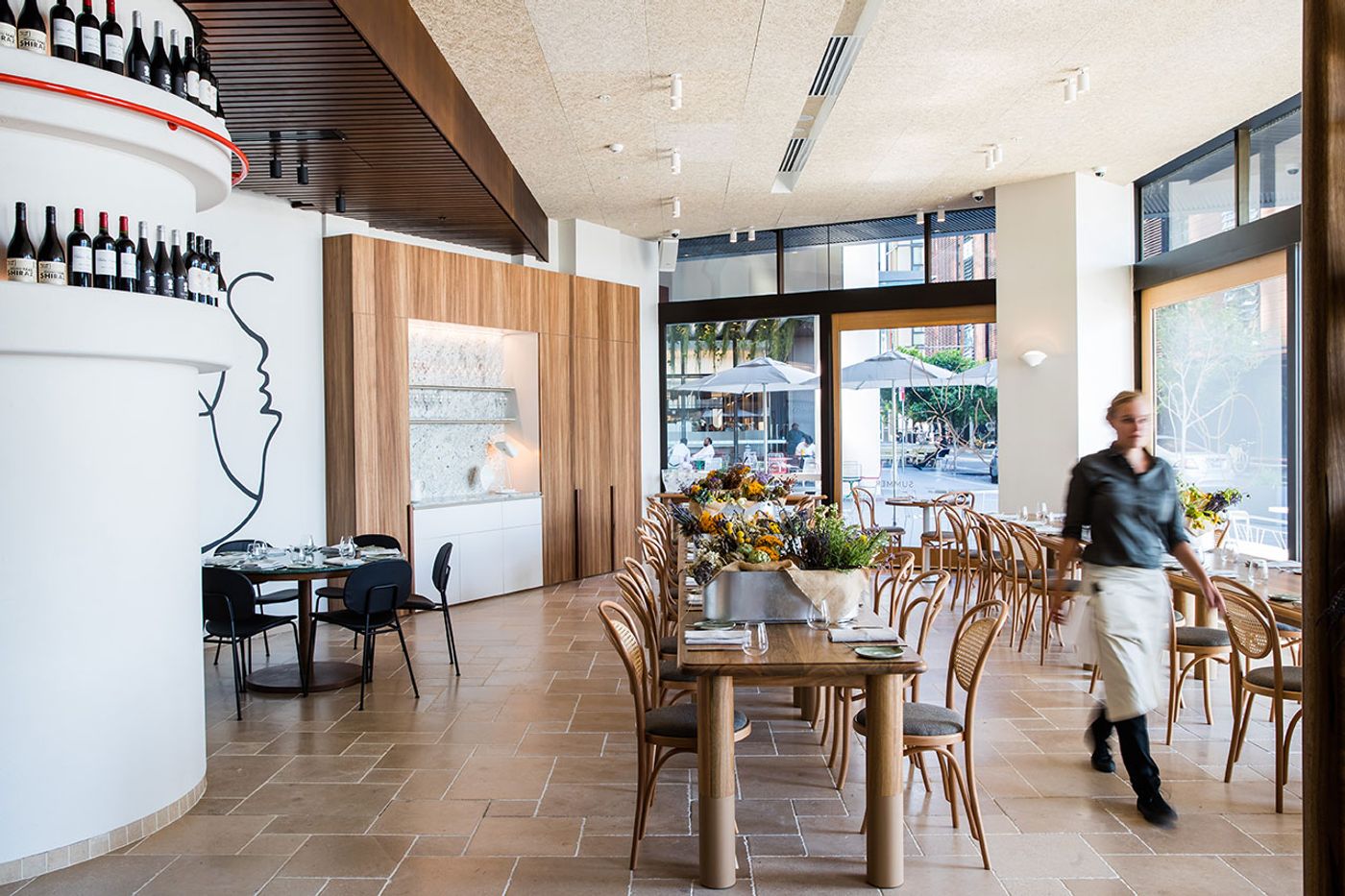
Photo by Nikki To.
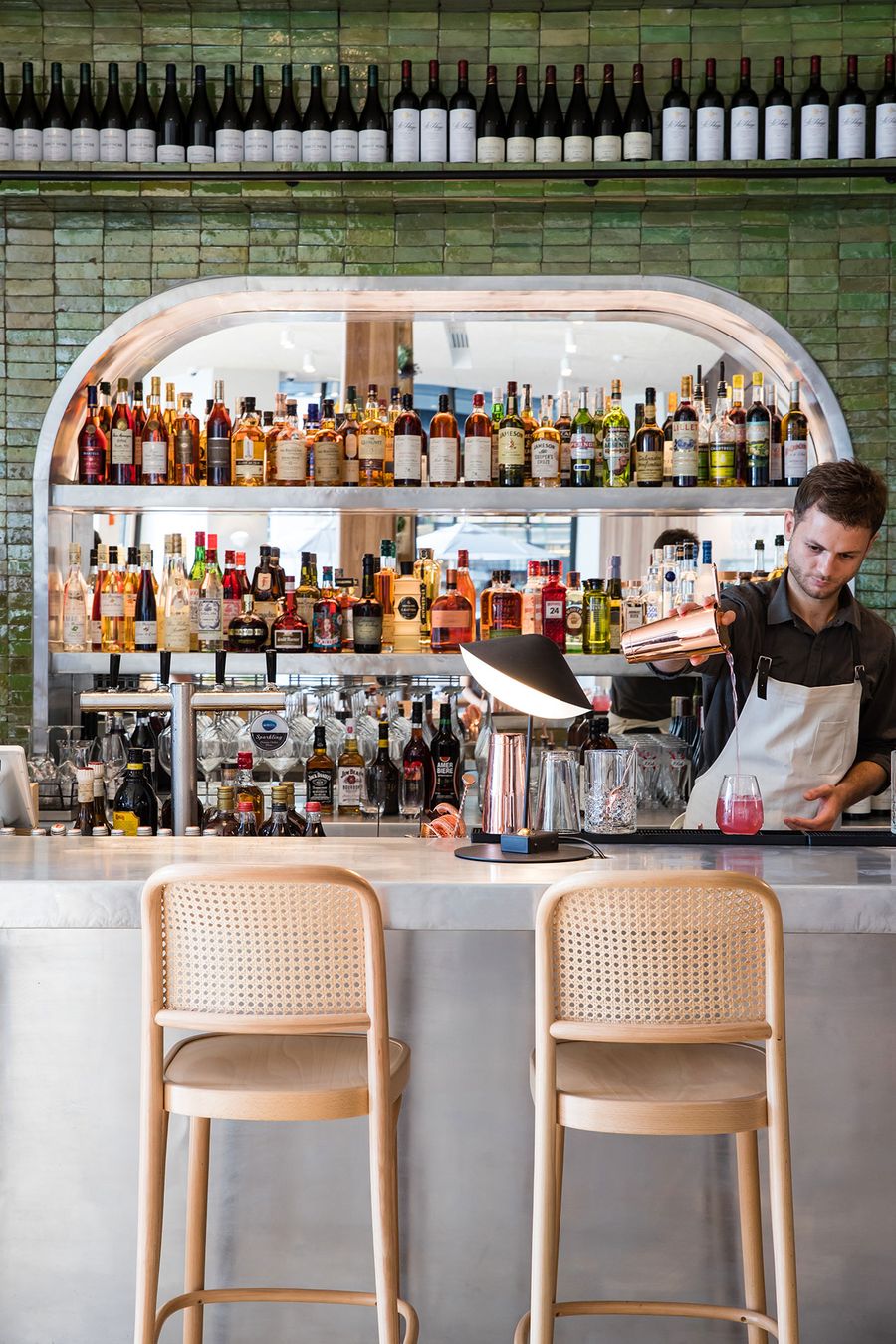
Photo by Nikki To.

Photo by Nikki To.
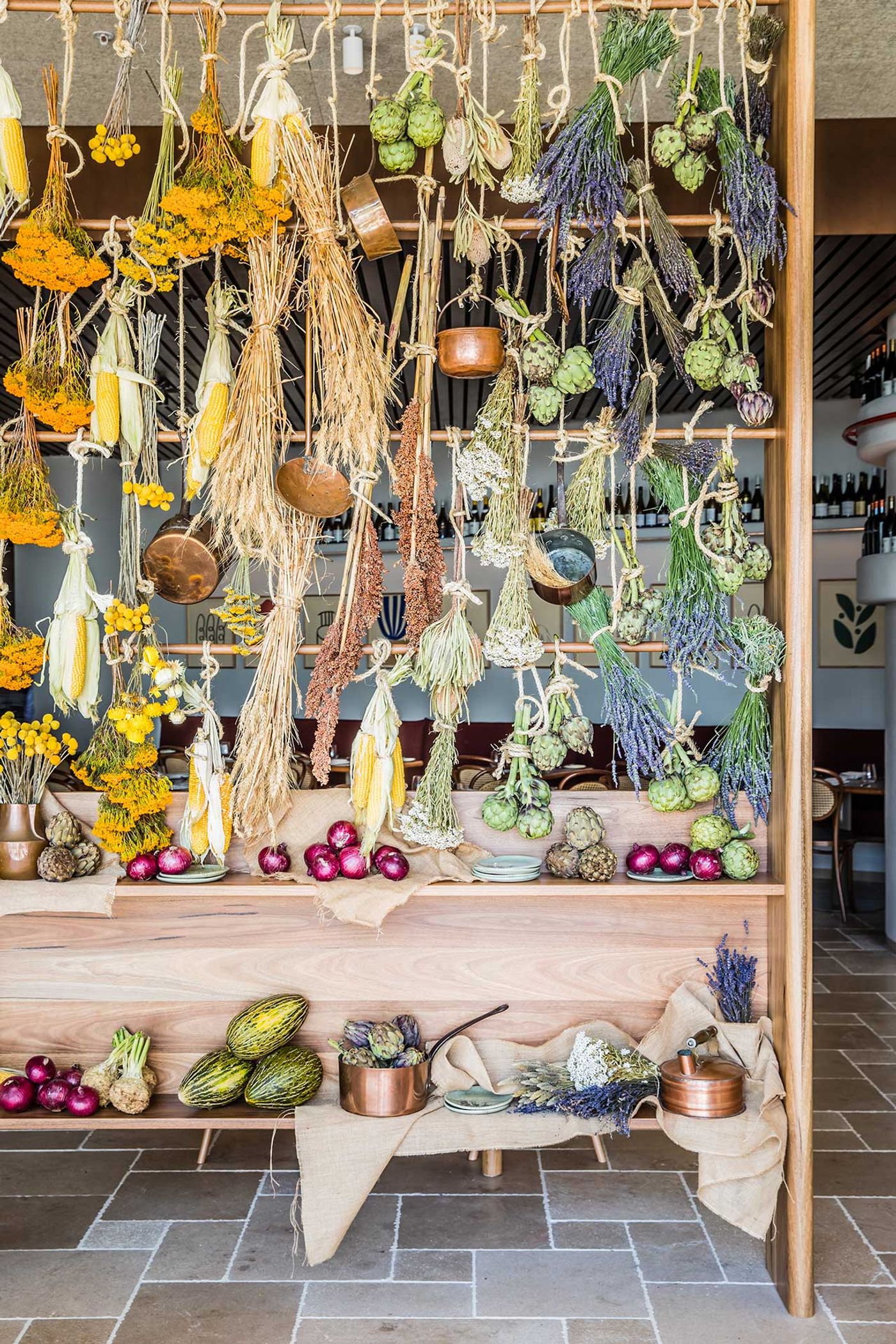
Photo by Nikki To.
Seasonality in particular has been embraced by both the kitchen and the front of the house. Not only does Chef Drew Bolton’s menu change seasonally in order to reflect the fresh, local and seasonal produce, but so do the menu covers and the seasonal illustrations therein. Thoughtfully, these culinary seasonal transitions are also channelled through the restaurant’s décor. A timber screen at the venue’s entrance hosts an ever evolving produce and floral installation, from and ears of corn and artichoke arrangements to lavender and thyme bouquets, setting the tone for what is to follow. Further on, bespoke table vessels with corresponding decorations and removable window decals further enhance the desired seasonal ambience.
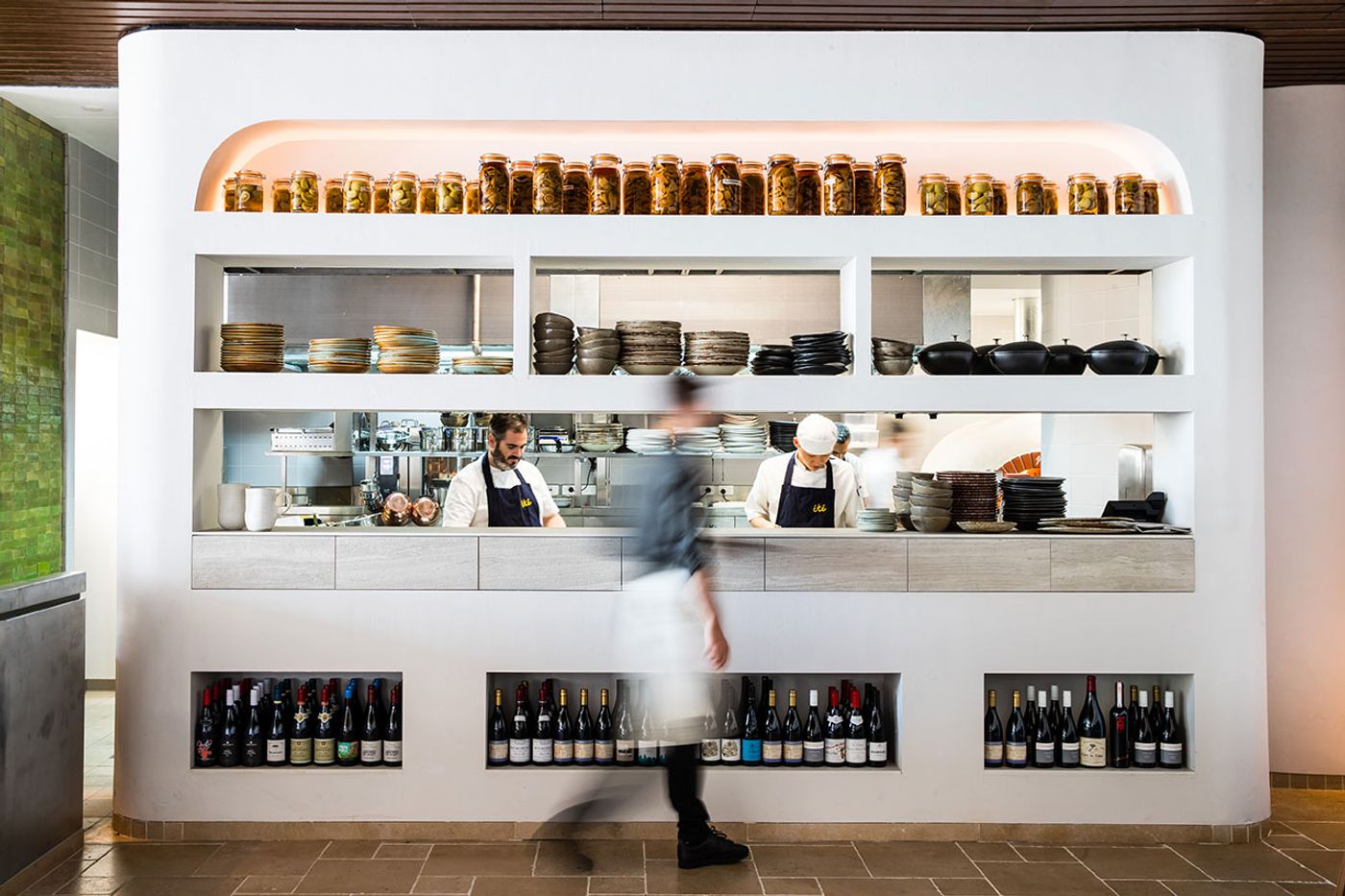
Photo by Nikki To.
The shifting seasons are also reflected, albeit more statically, in two competing colour palettes that the designers have used to divide the open-plan space into two zones. In the front section, bright tangerine and green tones and light timber elements, in conjunction with the daylight that floods the space through the glazed façade, represent spring and summer, while a combination of plum, burgundy and dark timber in the back conjure a more moody atmospheres more suitable to autumn and winter.
Don’t let the overall relaxed setting fool you, every detail, however small, has been meticulously designed. Details such as leather-bound handles and table legs, carved timber edges and granite inlays reveal a realm of refinement and luxury behind the veil of rough comfort, a sensation quite analogous to Été’s menu whose heart-warming dishes conceal highly refined culinary techniques.
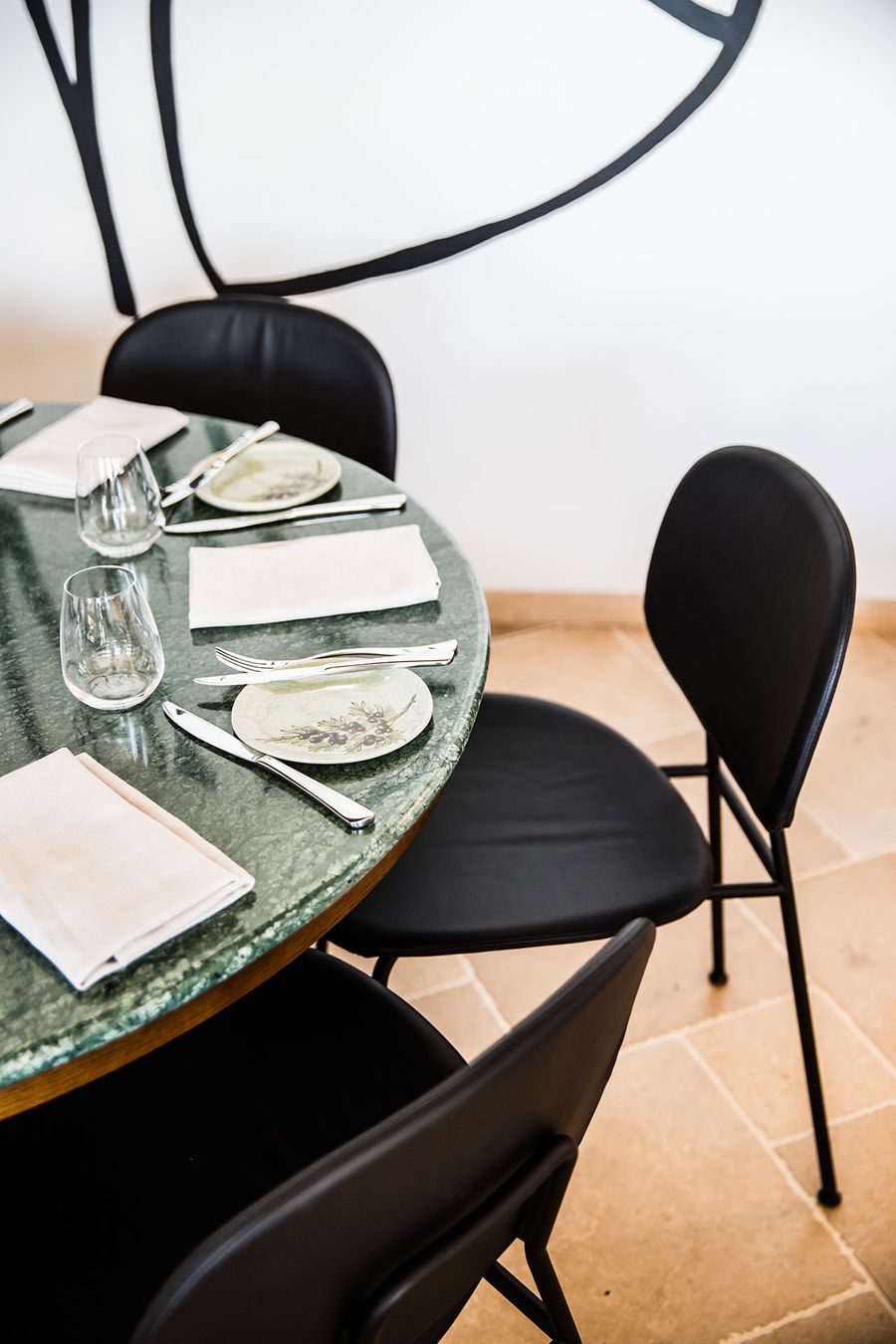
Photo by Nikki To.
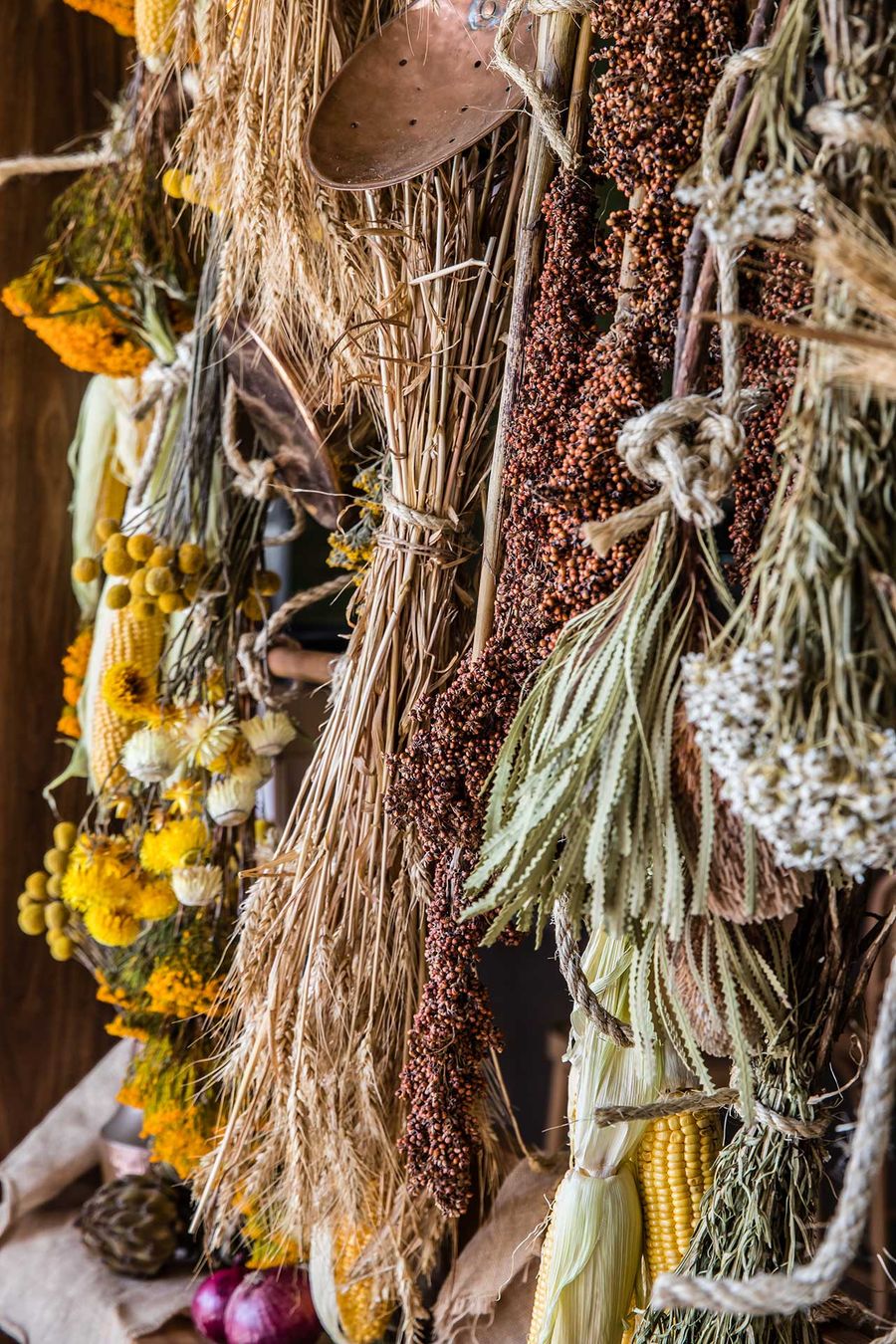
Photo by Nikki To.
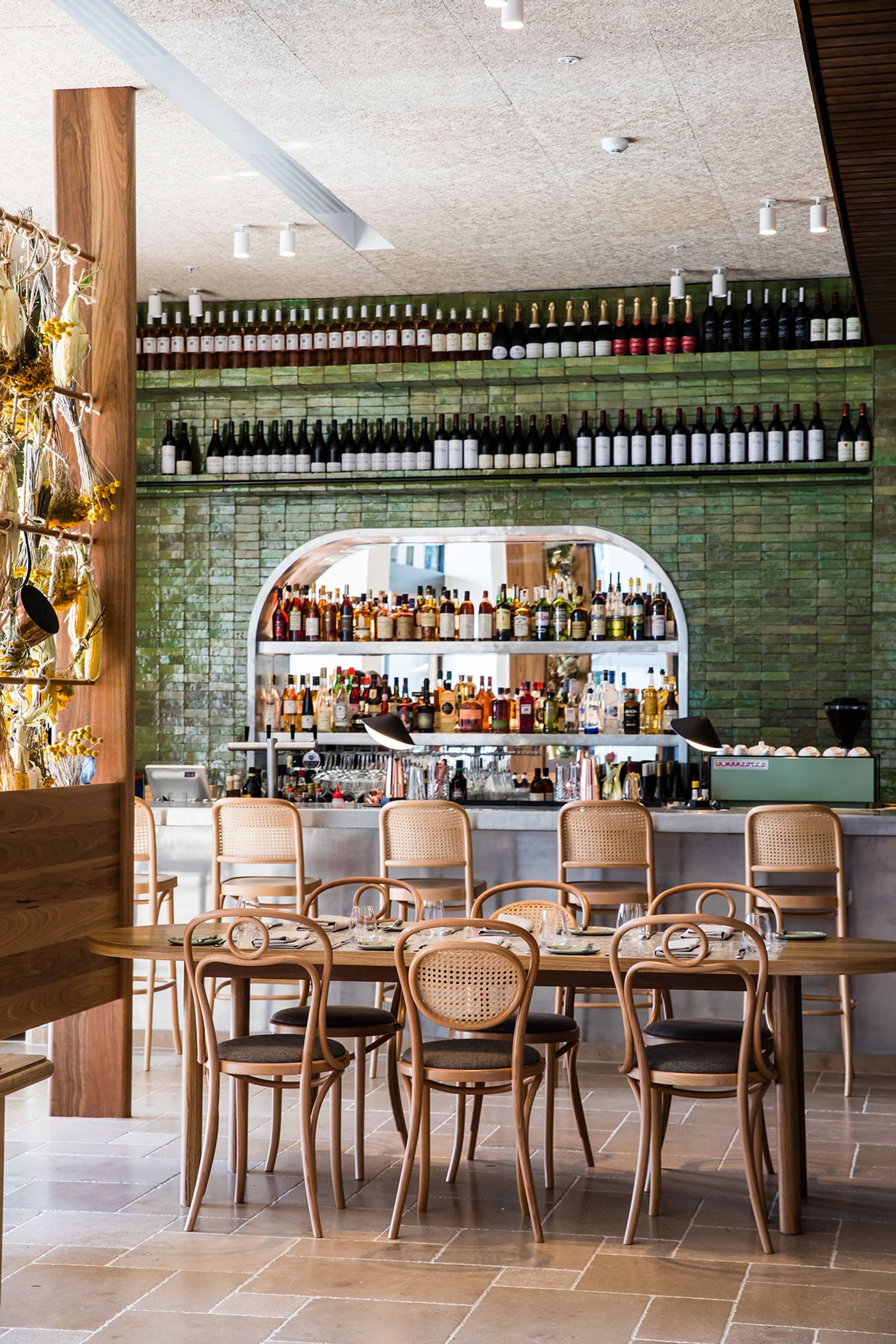
Photo by Nikki To.
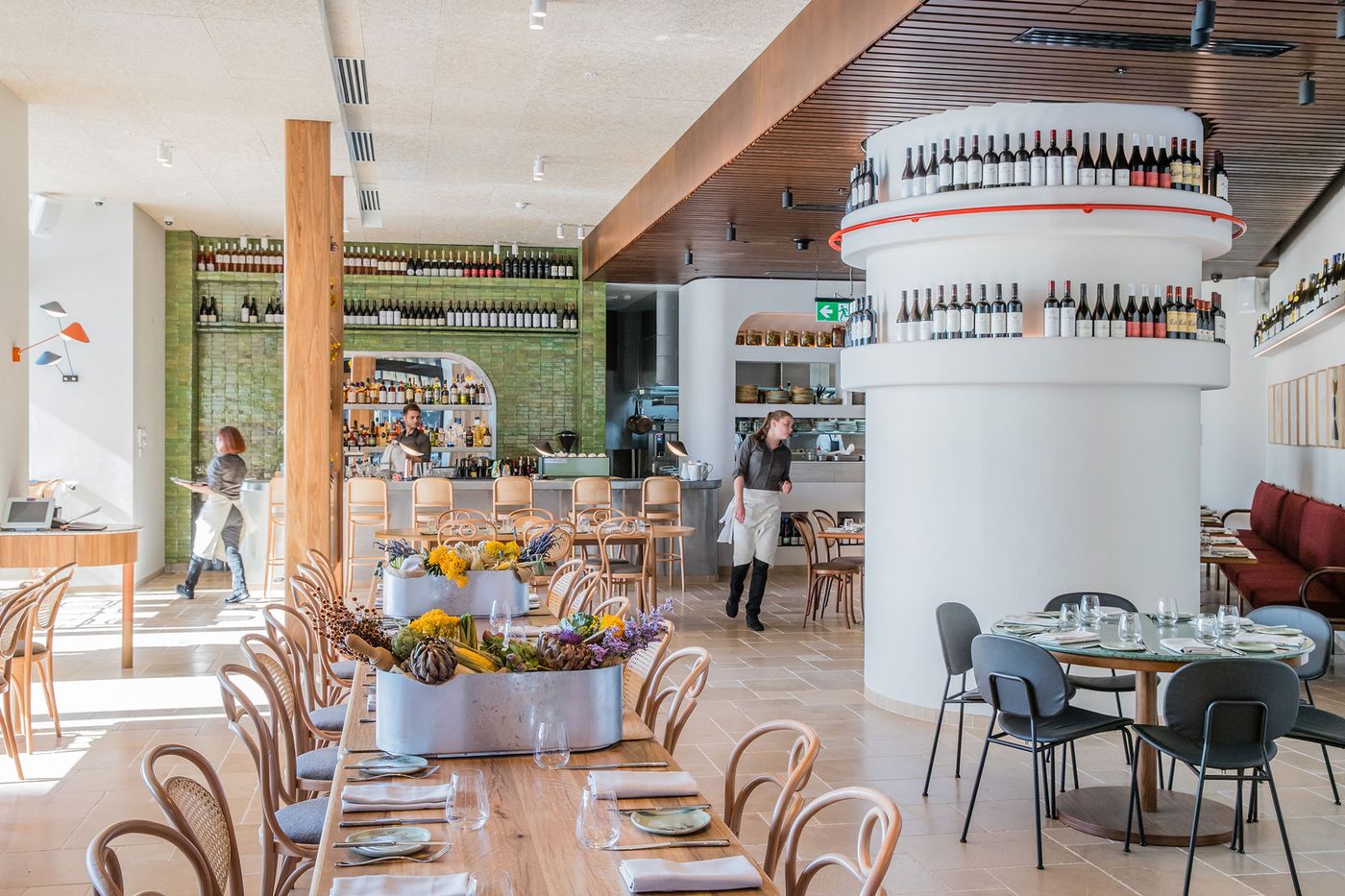
Photo by Nikki To.
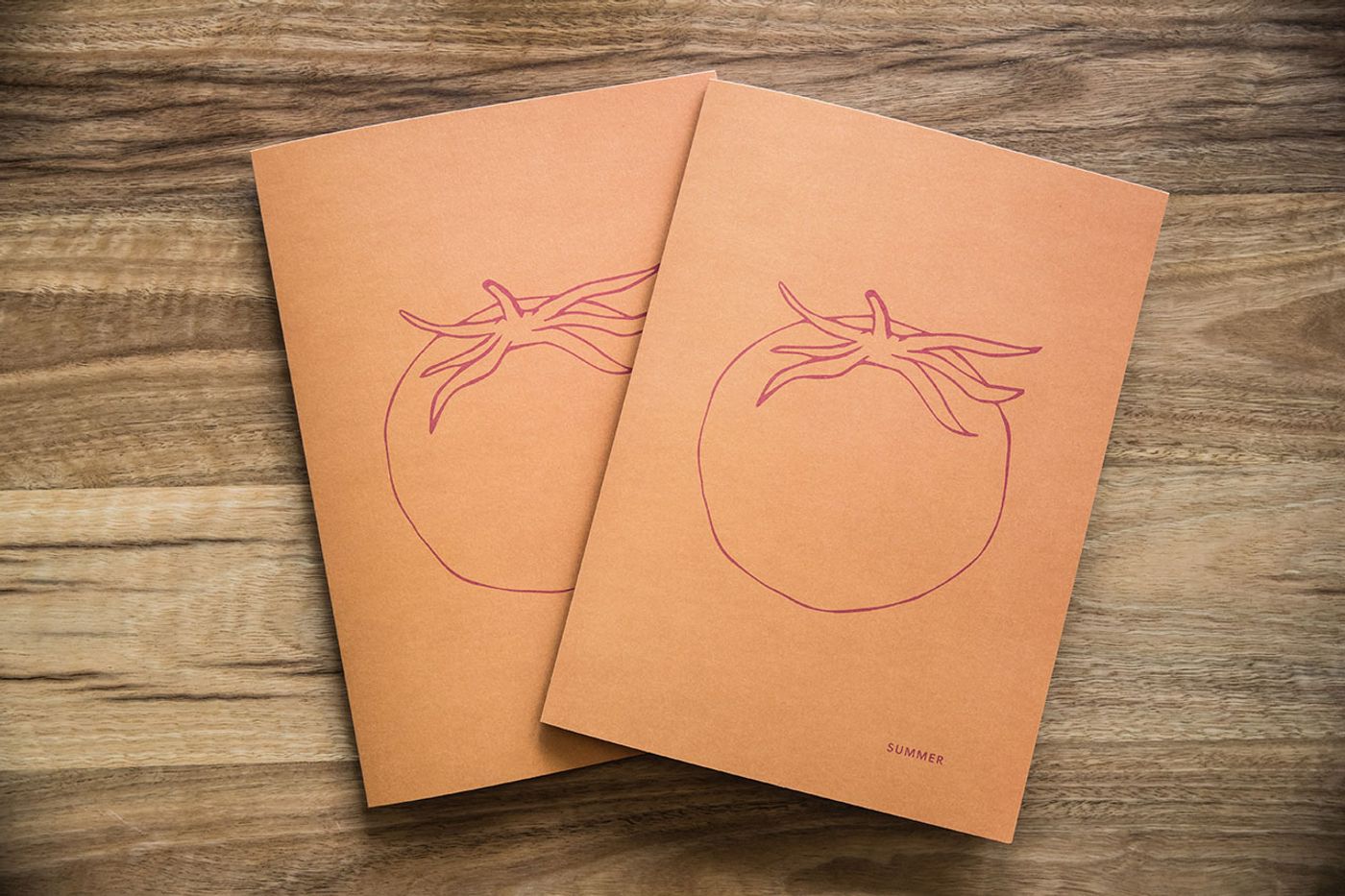
Photo by Nikki To.
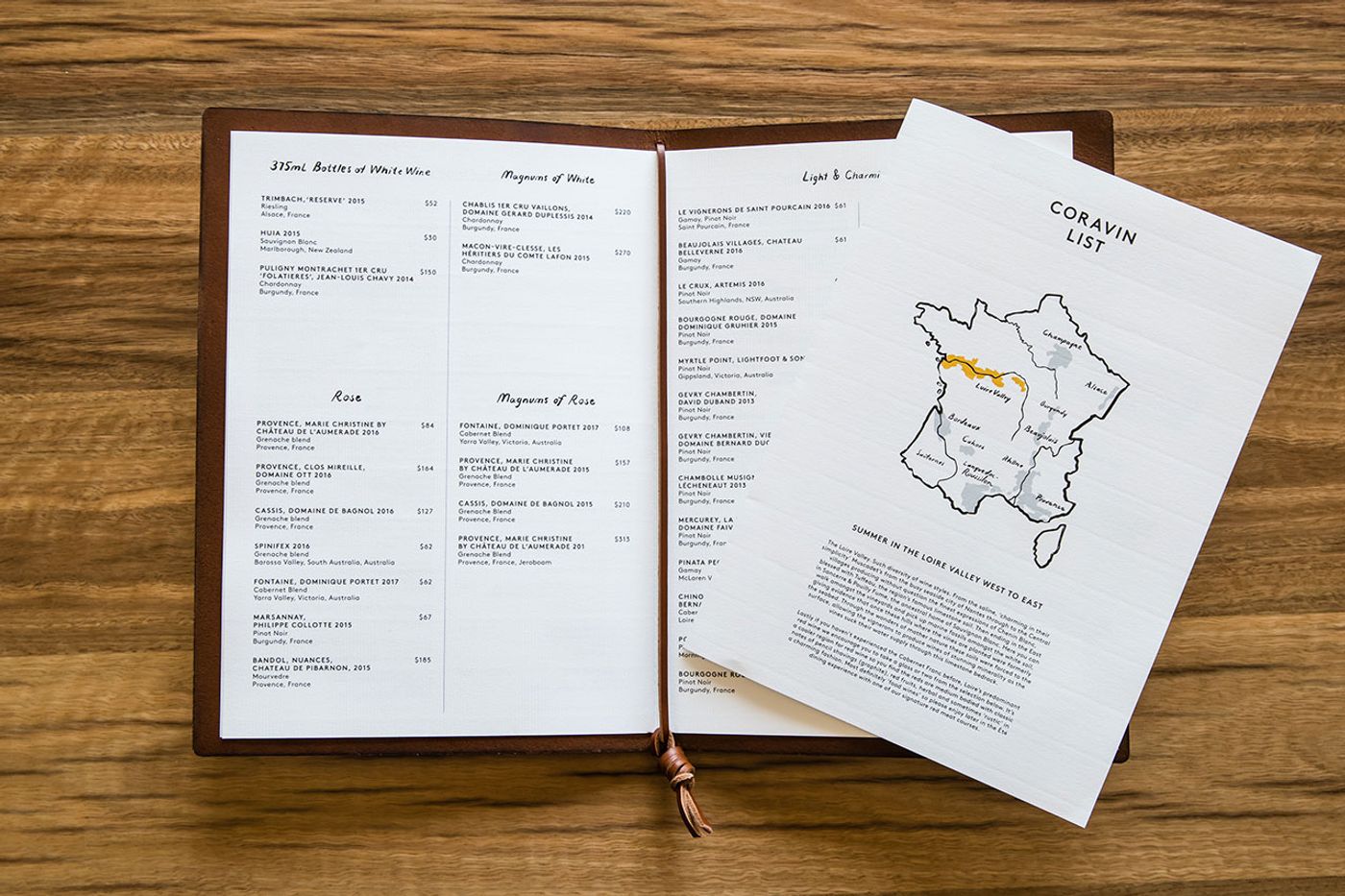
Photo by Nikki To.
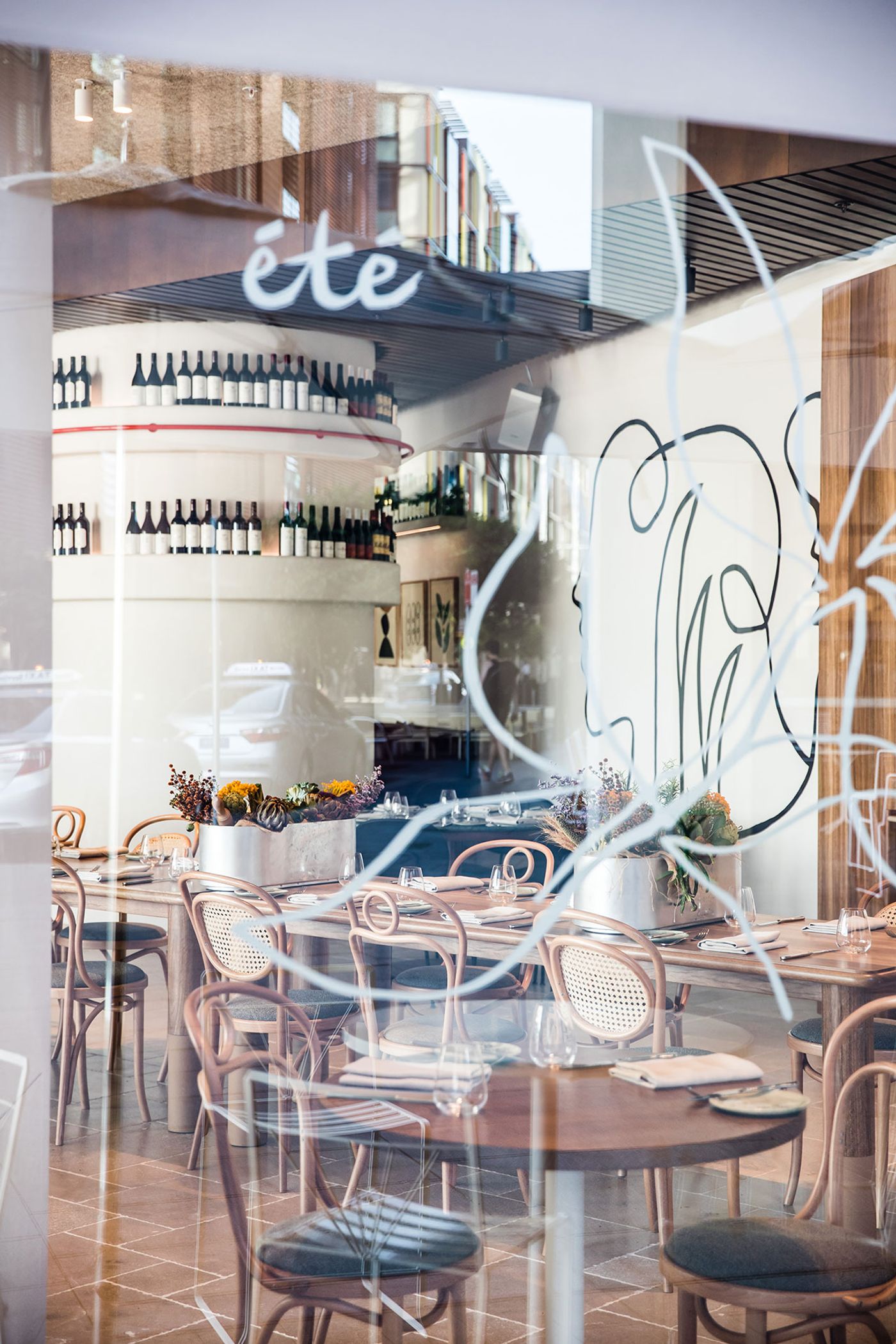
Photo by Nikki To.
